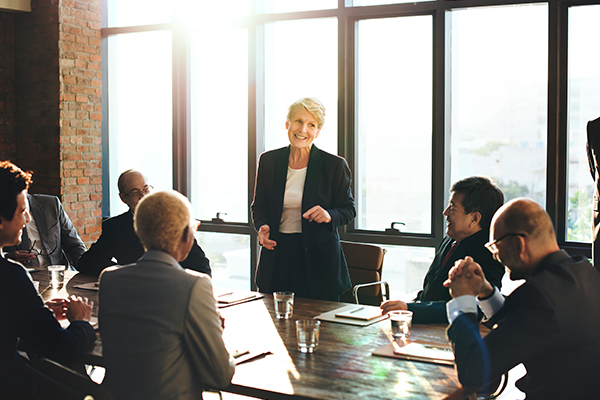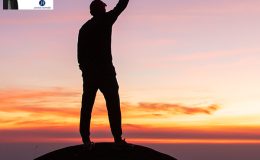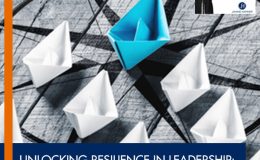
Getting to inclusion has its own set of challenges, but it is crucial for growth. Host Janine Hamner Holman sits down with Dr. Sacha Joseph-Mathews, the Assistant Dean for Diversity, Equity, and Inclusion at the Eberhardt School of Business at the University of the Pacific. Dr. Sacha talks about how diverse organizations outperform homogenous organizations significantly. The more people you engage with, the richer the perspectives and conversations. But creating a diverse group is just one step. How do you nurture it? How do you build trust to promote healing? Tune in to learn more.
GUEST: Dr. Sacha Joseph-Mathews | LinkedIn | University Of The Pacific
HOST: Janine Hamner Holman | Janine@JandJCG.com | LinkedIn, Facebook, and Twitter | Subscribe to my Newsletter! Book me to Speak!
—
Listen to the podcast here
Getting to Inclusion with Dr. Sacha Joseph-Mathews
What I am paying attention to are four words. Those are diversity, equity, inclusion, and belonging. In my work, often, this whole world of diversity is called those four things. Sometimes it is called other things. Other times, the words are in a different order. The most important words are inclusion and belonging. If everyone is included, we have diversity.
If everyone has the experience of belonging, one cannot feel that they belong if they do not also have agency or power. That gets to the equity piece of it. I have been thinking about pointing my work at the inclusion and belonging part. This brings me to my guest for this episode as she may have some thoughts around this frame. Dr. Sacha Joseph-Mathews is the Assistant Dean for Diversity, Equity, and Inclusion at the University of the Pacific. She is also the Owner and Principal Consultant for Joseph-Mathews Consulting.
—
Welcome, Sacha.
Janine, I am so happy to be here. I am excited to have our discussion. I want us to talk about these issues and dig deep into them.
Let’s get going. I am going to start the way that I often start with guests. What is something that you have become aware of that people are not paying attention to, either intentionally or unintentionally? What is the cost of that?
For a very long, America focused on diversity. I used the analogy, “Diversity is inviting people to the dance.” We were caught up in, “Who do I have at the dance? Who do I send an invitation to? Who responded to my invitation? Who showed up?” We have little consideration once we get them there. There is a huge cost to creating institutions, organizations, and spaces where you have a ton of diversity but people do not feel as if their voice is being heard.
Not only is their voice not being heard but it is not being heard at an equal level. That is a huge cost. We know that absenteeism, low morale, dissatisfaction with work, organization, and high turnover are byproducts of not paying attention. Particularly in California, we are the second-most diverse state in the US. The first is Hawaii.
We could look around. We have gender, race, ethnicity, sexual orientation, and diversity, yet no one is talking about unconscious bias. How many companies have unconscious bias treated as mandatory? We are not necessarily doing those training. Even if we are doing those training, I do not necessarily get to that space where I feel included and belong.
To continue with the dance analogy, diversity is inviting me to the dance. Inclusion is me knowing that someone is going to ask me to dance. Belonging is knowing that I am going to hear my job because someone could ask me to dance. In my case, they are playing alternative rock. I will say, “I like you or whatever, but I am not dancing to that.”
How many places and spaces are you thinking about the fact that you invite all these people, but you are not playing music that they like to dance to? There is the equity piece where I know that you are going to ask me to plan the dance. I know and expect that, so I am planning in my mind how I am going to be involved in this. With the equity piece, we are removing the barriers where we have to invite someone. “I am on the planning committee.”
These are the things that I think about in the business school when I am talking to organizations through the work I do in my consulting business because we know the costs. There is another component that we are going to get into it a bit. It costs America. It will be $54 billion in 2020 for high absenteeism. All these things there is a cost because people are leaving the organization. Over the last years, it costs us $172 billion.
A lot of times, it is not a cost. Organizations are even recognizing that they are paying. I was listening to a talk one time. The woman who was giving a speech said that, “This is for the birds.” The point where they hire someone to replace you, and they have ramped up production. It is between that points where you are like, “I do not give up anymore.” You go down in productivity. You increase in absenteeism, then you leave. It causes recruiting and hiring someone, training them, and then ramping them up to optimal productivity. That is a year’s salary.
Gen Zs and Millennials are more likely to shop at places that hire folks who look like them. Share on XThere is another cost. I have been having this discussion. There is this other cost of not realizing potential earnings that I could have if I had been more inclusive. In my generation, I am an X-er, when Boomers and X-ers speak to marginalized individuals like myself, I have always worked in an environment where I am probably the only Black person in that unit since I have been in the United States. I exist in our spaces. It is a little bit harder for me because I did not grow up learning how it is to exist in this space.
That is a little bit of the problem that I am not seeing anyone that looks and speaks like me. That is a little bit more taxing on my consciousness. As you evolve, you are now working. You are in this corporate space. If you look around and as you go up the corporate ladder, you are the only one of one. The air gets thinner and thinner.
That is anyone. That is a sexual orientation, nationality, gender, color, ethnicity, and race. You start saying to yourself, “Is this what I want to be doing with my life, code-switching and feeling culturally isolated?” At some point, you have to say, “What does this cost? What is it worth to the stress that I am experiencing?” In my generation, we have been culturized. You got to suck it up and revel in the blessing that you have been given this opportunity.
You are the only one and look how well you have done. Millennials and Z-ers are all like, “This is for the best. What I am going to do is I am going to start my own business. I will take this knowledge that I now have, and I am going to funnel it into my pocket value. Not into benefiting somebody else.” I have seen this with so many expert professionals that they have now taken away.
We know that Z-ers and Millennials are much more likely to shop at places and engage with companies that hire folks that look like them and/or have a diverse staff. Even if I do not consider myself to be from a marginalized group, I want to shop or engage and put myself in an organization that does hire people from a diverse group.
The organization is losing out not only because they are missing out from that person’s expertise, knowledge, perspectives, and all of these things, so we are clear. In each room, they are one of one. They are coming with a perspective that is pretty unique, but they are also missing out on the opportunity to tap into these clients that perhaps differ from themselves.
Look at what the US population is going to look like. In 2025 in California, there will be more Brown folks than the majority of White folks. We are almost there in California, but the number that people did is 2050 for the rest of the United States. You got to reach a point where you not only want diverse consumers, you are going to need diverse consumers. If you are going to be successful, you will have to think outside of the box.
It is similar to the University of Phoenix phenomenon. For a long time, working adults were thinking, “It would be cool to have a continuing program where we have some programs for booking out, but our bread and butter are high schoolers, who want to come out.” We have degree completion. That is nice. You get to a point where somebody recognizes it. There are enough people out there to have an entire school, and that is all we do. There is a lot of money in this space. Everybody else is like, “We should have thought about that.” Even though for years, they were saying, “We have these folks over here that we should focus on.” That is what we are talking about.
I love your frame for so many things. What you are talking about here is not only we are here in this Great Resignation. In order to have quality employees, we need to be diverse. One of my clients is a law firm that is, in fact, very diverse. They have realized they have to have some active programs that are happening that they can be speaking about around diversity to be able to retain in some degree but to recruit top talent.

Getting To Inclusion: With equity, we remove barriers when we invite someone.
We are talking about that, but we are also talking about, as an organization, positioning us for future success, meaning tomorrow and future success over the next 10, 15, or 30 years. To have a diverse organization and employees means we have different lived experiences, educational attainment, and background. That is going to lead to better decision-making because you have got many more perspectives that are part of the decision.
It is going to lead to better brand positioning because you can think more about what many different kinds and types of people would be interested in consuming. You are going to be able to reach those consumers because they have that like-me affinity. They can see themselves in your organization.
I was talking to somebody who was interested in taking on diversity, equity, inclusion, and belonging. He said, “There is so much actual work we need to get done. How do we make time for these initiatives? How do I make time to talk with my employees, listen to my people, and engage in conversations around like, ‘How are you doing?’ Not only, ‘What did you do over the weekend?’ How do you make time for that in the face of all of the things we need to get done?”
My answer was, “How much time are you spending on organizational nonsense? That would not be an issue if your people were much more engaged, productive, and if you were not churning and burning through your people so that you have got to replace them at the cost of a full year’s salary.” I had never heard it put that way. That was brilliant in your laying out of that. I love that you are bringing in all of these different perspectives.
As the Assistant Dean at the University of the Pacific, you have an opportunity to engage with not only students now but returning students, students who have graduated, and with whom you are still connected. You get to have a much broader understanding of the dynamics in the workplace now. I would love it if you expanded upon any of that or anything that I said that makes you think of something else.
I want to talk a little bit about how a diverse workforce is going to need nurturing in a different way than a non-diverse workforce. I often joke about it when I do my seminars. I say to people, “Years ago, someone said to me, ‘I wish these young people would have some common sense.’” I started off a lot of my diverse work by looking at generational diversity. That is where I started. It is because I was teaching customer service. It was right at that time when we were getting all these Millennials into the space, and Boomers were losing their minds. X-ers were like, “What about me?” My job was to calm down the Boomers. One of the things that struck me was how Millennials saw the world so differently. They needed different things than Boomers did before that.
If we continued to see the world the same way, despite our entire group around us seeing the world in a completely different way, we would not be able to engage with our employees successfully. I always joke about one time when I had a student who did something that stood out to me as a typical Boomer/Z-er misunderstanding. Rebecca was working in an office on campus and I had a meeting with her boss. I came there and said, “I have a meeting with Jennifer.” Rebecca replied, “Okay, professor.” and then texts Jennifer who is sitting right outside her office.
I am telling the story, and people think, “See? That is laziness. Look at that!” So I asked Rebecca, “Break it down for me. Why do you feel you needed to text Jennifer instead of getting up and knocking on her door?” She says, “Why would I get up and knock on the door?” I thought, “Why wouldn’t you?”
For you to be successful, you need to think outside the box. Share on XShe says, “If I knock on her door, maybe she is in a meeting and I am going to disturb her. It requires me to get up and knock on her door, which is the part that I do not necessarily want to do. Maybe you are focusing on that, but instead, how about instead we focus on the fact that texting allows her to respond on her time. I am not interrupting a meeting. She still knows that you are here which would have been the purpose of me getting up and knocking on the door. Why do I have to do it your way? Why does your way make it right?” I had to think about that. I said, “You are right. I only think that my way is better because it’s the way it’s always been done.”
As we have folks designing packages to attract new employees and focus on retirement benefits, the new employees think, “I am going to be with your organization for 2 to 3 years. I do not care about retirement. It is not going to impact me. Instead, I would love it if you all would talk about loan repayment.” The organization will say, “We are not interested in loan repayment,” but then the organization is upset that they cannot attract Millennials.
What we know is diverse organizations outperform homogenous organizations significantly.
It is 35%.
It is closer to 40% in certain industries.
People often say, “What about the diversity of thoughts?” I say to folks who say that to me, “An easy way to get a diversity of thought is to bring in people of color.” It is a very easy way to get diversity.
Show me an organization that is treating Black and Brown people well and I will show you an organization that is treating folks with disabilities and an organization that is doing well on LGBTQ employees and customers. What we know is that intersectionality is real, but often, we get caught up in the way that we are doing things and that it is the right way to do things.
As we go to these diverse organizations, we are not going to be able to keep doing things the way we have always been doing because we are going to have people challenge that process and principle, and there will be some answers. Even though diversity teams outperform non-diverse teams, there is still conflict. We have to jump over that hurdle of conflict and get past that to see and maximize that performance.
When we jump over that, are on the same page, understand each other, and work in sync, we do amazing things. I even see it when I am in my classroom. The more people I am engaging, the more perspectives I get and the richer the conversations.
This idea of common sense comes out of a commonality. As we broaden that commonality, we are going to have to broaden our sensibilities. Sometimes, it is going to be a little bit painful. First of all, we are going to have miscommunication because we all speak differently.
My husband is always saying to me, “Can you use your inside voice?” I say, “I am a professor. I have no inside voice. This is how it is done.” For some people, I am too loud. We all need to get comfortable with things with which we are not necessarily comfortable.
The other thing is this idea of realities. I often joke with my students. I talk to them about what we were talking about in marketing, “What is a family? What does a family look like?” Depending on where in the world you are, their family looks different. In some places, the family looks like a nuclear mom, dad, kids, and dogs. In some places, that is two dads and two moms. In some places, there are two tías, a mom, a dad, and an Abuela.

Getting To Inclusion: Diverse organizations outperform homogenous organizations significantly.
We have to think about it as we are bringing people from different realities. What are the stresses? What should the insurance plan look like? It is all of these things that people are not thinking about as they embrace diversity: what are the needs that our employees have? If I am in an environment where everybody has a tía living with them and then as we come to the workspace, we think about the tía when we think about family.
I often think about working moms and America’s school system being designed for stay-at-home moms. If you look at the types of PTA meetings and the fact that most schools do not have after-school care, and there are schools that have a late start. “What is this late start?!” Who is at home for a 9:00 late start?
In a way, for young children, a lot of homework is designed so that parents have to be involved. Maybe you have 1 or 4 parents, but if you have parents who are actively working, they are going to get home from work and be tired. The last thing they will want to do is more work and also have to remember “What the heck was Algebra?”
As we think about this conversation about diversity, equity and inclusion, I want us to think about what we are not considering. It comes back to that analogy of the dance. Are we still playing our music? We do not think about what other kinds of music we might want to play at the dance. How do we come up with the guest lists?
What is the food look like? What beverage are we serving?
Everything must be re-imagined, so you cannot bring people into these spaces without considering that the needs of the organization’s employees changed. The tolerance level is also very different. We talked about Boomers and X-ers. We were culturized to stay, work hard, and pay our dues. Now, I have young people say to me, “Professor, there is something I need. So then I ask my boss, ‘What are they going to do about it?’ They did not have a plan, so I left. It is simple.”
I believe people who are “out-of-pocket” need to be solidly checked. When people are being inappropriate, it needs to be challenged. As you can imagine from this conversation, I am not afraid to check them either, but what is involved in that? You check enough people, and then you start getting a reputation.
Now, you are a problem and a b*tch.
If we are serious about having a diverse workforce and a world in which people of different backgrounds have equity and are included and have the experience of belonging, we have to get comfortable being uncomfortable. Share on XMany Black women tell me, “People say out-of-pocket things to me, Sacha.” I now have to think about, “How am I going to address it? What can I see?” We have no way of even thinking, “What I said was out-of-pocket.” It is because, in my words, it is okay.
My husband is Black. He and I were watching TV and he made a comment about a Black woman. If he and I were Black, I might have been fine with his comment about this woman who was on the TV, but because I am a White woman and he is a man, I found his comment incredibly offensive. We had an interesting conversation. He had been talking with a Black coworker, who is a woman who had used that word referencing other women. You probably have a hunch about what that word might be. She was a larger woman.
I said, “Maybe in that context, it is fine. I do not feel great about it even in that context, but that is not my context. I do not get to say whether or not it is okay in that context. What I am talking about is you and I are sitting here in the living room. You used a word as a man, and I heard it as a woman. I am not down with that. That is not okay with me. You do not get to refer to women that way. Whatever race they are.”
It is this idea around different cultural norms that exist within different groups. One of the things that is important is how we honor that. What is the appropriate role for code-switching? Is it ever appropriate? In what situations is it cool, fine, and great to speak in one way? In what situations might we need to alter that?
The other thing that I am interested in as a White woman who works in this space of diversity, equity, and inclusion is there is so much completely justifiable anger among Black women at White women for being poor allies in the struggle.
It was an adversarial/ally. Sorry to interrupt, but I want you to know about that.
When you said that, I got a feeling in my body that there are things that are said to Black women that are the same things said to Latina women, White women, and Asian women. It is something that has been said to women. If I am looking through the lens of a Black, Latina, Asian, transgender, or White woman or whatever the lens is, I might think this is happening because I am a “fill in the blank” woman, as opposed to this is happening because I am a woman.
I am interested in thinking about how, as a White woman in this space, I can help create and facilitate some communications in that domain. A conversation around how White women can, on our own, apologize for everything else that is needed, then begin to create a space for the healing of those deep wounds and to create bridges forward.
It is one of the things that I am concerned about. I know many people, regardless of gender, race, educational attainment, ethnicity, or sexual orientation, who do this work are worried that this will be yet another moment in time but ultimately nothing changes.
It is important that the conversation happens because it needs to happen. There is harm that has been caused that needs to be owned and apologized for, healing that needs to happen, and bridges forward need to be created because if we stay here in this place of harm and pain, we will create yet another moment that some things happen and nothing eventually changed.

Getting To Inclusion: The more people you engage with, the richer the perspectives and conversations.
Trust is the first thing that comes to mind, and then ownership is the second because even in folks who want to be allies, there could be this feeling of, “How can we move fast?”
It is the moving through.
The wound is so deep. This is something that we need to own and recognize. It is not an old wound that had healed that we remember and commensurate on, “Remember when that pain happened.”
We could not move past it. It is a current wound.
It is deep. We have to be thoughtful about addressing how the wound happens and how we can help with the healing. We have to work to build trust between the allies. Black women, in particular, have endured so much pain without being able to communicate the extent of that pain. We have endured pain through our children, men, and ourselves, through our bodies. There seems to be a lack of true appreciation of how deep that has run for Black women.
There is White Fragility on top of it. Let’s not underestimate White Fragility and the role it plays here, whether we are talking about the weaponizing of tears, people’s feelings, or whatever. Does anyone say, “Why don’t Black women get to have feelings? Why are our tears for our sons and daughters not heard at the same level as White women’s tears?”
It is the trust between women. I could say because you mentioned the Black woman, but I can tell that you often talk to a lot of Black women. They feel race before they feel gender because sometimes gender is used to hit Black women the same way. If I am in a room and I say something and a man repeats it, I am not letting that slide. The Black women would not let it slide. A lot of White women would be upset about it.
The piece hits us differently. I am not saying it is not there. It is there, but it hits us differently. At the same time that we talk about that, I have had conversations with White women where they are grumbling and complaining about the gender piece. If I bring up the race piece, they are dismissive of it as they were talking about the gender piece. There are so many wounds.
The root of all of this is how much trust we have between ourselves with you as a White woman and me as a Black woman. How can we tap into that trust as we try to heal? How do I know that you are coming at me with a genuineness of spirit and an authenticity that I can believe? How much of it is performative for your own benefit? Let’s be real. We have to have those conversations and be open to having those conversations.
Judge by the content of the character rather than by the skin color. Share on XIt is back to what you were pointing to in the beginning. It is getting comfortable with being uncomfortable. If we are serious about having a diverse workforce, honoring people’s lived experiences, and figuring out how to have a world in which people of all different backgrounds have equity, are included, and have the experience of belonging, then whoever the people are who hold power have to get comfortable being uncomfortable.
It is being uncomfortable and taking ownership of why they should be uncomfortable. Do not underestimate the impact of how uncomfortable we [black people] have been.
It is like, “It is my turn to be uncomfortable.” You and people who look like you have been uncomfortable walking out the front door. You were immediately in a state of heightened awareness of, “Where does the danger lie? How am I going to present? There is this thing of constant awareness and lack of comfort walking through the world.
My whiteness has nothing to do with anything else because I happened to be born White. I got to be comfortable in a lot of situations, and so, it is my turn.”
It is, and let me tell you, as an immigrant coming from a predominantly Black and Brown country, that discomfort was new to me. I was not accustomed to being anxious when I heard sirens behind me. That was learned. I was not accustomed to being judged by the color of my skin as opposed to the content of my character. That was new to me. I am not loving this discomfort. I am very clear from having been in a comfortable state coming into an uncomfortable state. Now, I have my kids here. My husband was born and raised here. It takes some getting used to that discomfort.
I am a professor, so I am not down in the trenches in an extremely racist environment, but I often see if you are driving down the street and somebody cuts you off. You say, “What’s up with that?” Most people are not ranting and raving after one incident. Here comes another and another. By the fourteenth person who has cut me off, I want a big truck and a helmet. I am going to run people off the road.
That is the space that I am in at that point. That fourteenth person is like, “What’s up with you?” I am the first person that they cut off. They think, “I am not a serial cut-offer. Why are you getting so upset with me?” It does not matter that they are not a serial cutt-offer because my experience is “I am up to here with people cutting me off at this point.” A lot of my White friends are feeling like that fourteenth person think, “I did not spend my life cutting people off. I am being blamed for all of this.” I reply, “You are the fourteenth person today, so deal with it.”
For a White person, it can be a hard place to stand, and we get to get comfortable with being uncomfortable. If we think about empathy, which is different from “That is terrible. I am so sorry for you OVER THERE.” That is sympathy and a little bit icky. Empathy is feeling what you are feeling with the other person. In order to do that, I have to get uncomfortable.
In my mind, I “get to.” It is, in fact, a privilege and an honor to get to do this work in the way that I get to do this work.
It is a privilege and an honor to be with people in those experiences and get to look at, “Maybe I was the fourteenth person who did it, but I still did it. I still cut you off, shut you down, took your idea, and did whatever it is that I did.”
I talk about the fact that my family is from the South and has been in the South of this country since the 1700s. Did they own slaves? I do not know the answer to that question. My hunch is somebody did. I get to own that now in 2022. I get to have feelings of guilt, uncomfortableness, and shame about that.
Shame is a place from which we cannot take action. What can I do to transform that into being with people whose ancestors were harmed by my ancestors and honor that experience and injustice that then carried through the generations? Generational trauma is a real thing.

Getting To Inclusion: If we stay in that place of harm and pain, we will create yet another moment where some things happen, and nothing eventually changes.
How can I, as a person who spent many years working for social justice organizations before founding my own business, honor that harm that was created by people whose privilege I inherited? It is not easy. It is critically important. Regardless of our gender, ethnicity, skin color, educational attainment, gay-straight, cis-gender, transgender, able-bodied, disabled-bodied-ness, we all get to be in this together and uncomfortable, and some of us get to be more uncomfortable than others because it is our turn.
This has been amazing. We may need to create this as a series, come back, and do this regularly. This has been a wonderful conversation. Dr. Sacha Joseph-Mathews, thank you so much for your brilliance, lived experience, and willingness to speak truths that must be spoken to power and non-power, and for your stewardship of the next generation coming into the workforce. Thank you for who you are, how you be, and what you do.
Thank you so much for the opportunity to share. This has been an amazing discussion. I look forward to coming back and talking more about the cost of not paying attention. It has been wonderful, Janine.
You are welcome. Remember, great leaders make great teams. Until next time.
Important Links
About Dr. Sacha Joseph-Mathews
 Sacha Joseph-Mathews is the Assistant Dean for Diversity, Equity and Inclusion and Associate Professor of Marketing at the Eberhardt School of Business at the University of the Pacific. Professor Joseph-Mathews obtained both her PhD in Marketing and a Master of Science degree with special emphasis in Tourism and Hospitality Management from Florida State University. She also holds a Bachelor of Arts degree in Mass Communications from the University of the West Indies, Mona Campus.
Sacha Joseph-Mathews is the Assistant Dean for Diversity, Equity and Inclusion and Associate Professor of Marketing at the Eberhardt School of Business at the University of the Pacific. Professor Joseph-Mathews obtained both her PhD in Marketing and a Master of Science degree with special emphasis in Tourism and Hospitality Management from Florida State University. She also holds a Bachelor of Arts degree in Mass Communications from the University of the West Indies, Mona Campus.
Dr. Joseph-Mathews has been teaching executive education for the Westgate Center for the last 7 years and has taught undergraduate, graduate, and continuing education classes at multiple institutions. She specializes in marketing, customer service and international business courses including; international marketing, marketing research, consumer behavior, international business, advertising and promotions, event management as well as hospitality and services management.
In addition to her work in academia, Dr. Joseph-Mathews is an active consultant and business coach in the areas of marketing and customer service both domestically and internationally in the for-profit and non-profit worlds. Prior to her academic career Dr. Joseph-Mathews worked in media, tourism, export development, trade development/investment, international business and with non-profit management.





